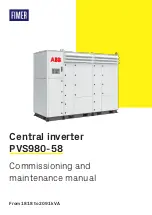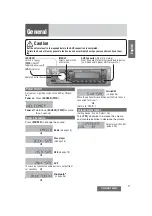
Transition Networks
CBFTF10xx-1xx User Guide
33403 Rev. E
https://www.transition.com
Page 9 of 15
Parallel Detection
Parallel detection is the method used to link when an auto negotiating port detects a link partner that is
in forced mode and therefore cannot participate in the auto negotiating process. Parallel Detection can
be set to IEEE Standard half duplex, or the non-standard full duplex. Switch settings for parallel
detection are valid in hardware or software mode, only when Auto-Negotiation is enabled.
Per the IEEE method, an auto negotiating port that detects a forced link partner should drop to the
detected speed
(10Mbs or 100Mbs)
and default to HALF DUPLEX.
The CBFTF-10xx-10x allows bypassing the IEEE method by setting the parallel detection default mode to
half or full duplex via DIP switch 3.
Full Duplex Network
In a full duplex network, maximum cable lengths are determined by the type of cables that are used. See
the cable specifications for the different CBFTF10xx-10x models.
Half duplex network (512-Bit Rule)
In a half duplex network, the maximum cable lengths are determined by the round trip delay limitations
of each Fast Ethernet collision domain.
(A collision domain is the longest path between any two terminal
devices, e.g. a terminal, switch, or router.)
The 512-Bit Rule determines the maximum length of cable permitted by calculating the round-trip delay
in bit-times (BT) of a particular collision domain. If the result is less than or equal to 512 BT, the path is
good.
For more information on the 512-Bit Rule, see the white paper titled “Collision Domains” on-line at:
https://www.transition.com
.
SNMP
See the on-line documentation that comes with Transition Networks FocalPoint™ software for
applicable commands and usage.
Use SNMP at an attached terminal or at a remote location to monitor the converter by monitoring:
• Media convert
er power
• Serial and part number
• Port number
• Copper and fiber link status
• Copper and fiber duplex mode
• Copper port speed
• Hardware switch setting
Also, use SNMP to enter network commands that do the following:
• Enable/disable Auto
-Negotiation on copper
• Force 10Mb/s or 100Mb/s on copper
• Force full duplex or half duplex on copper
• Force full duplex or half duplex on fiber
• Enable/disable Far
-End Fault on fiber
• Enable/disable Link Pass Through

































